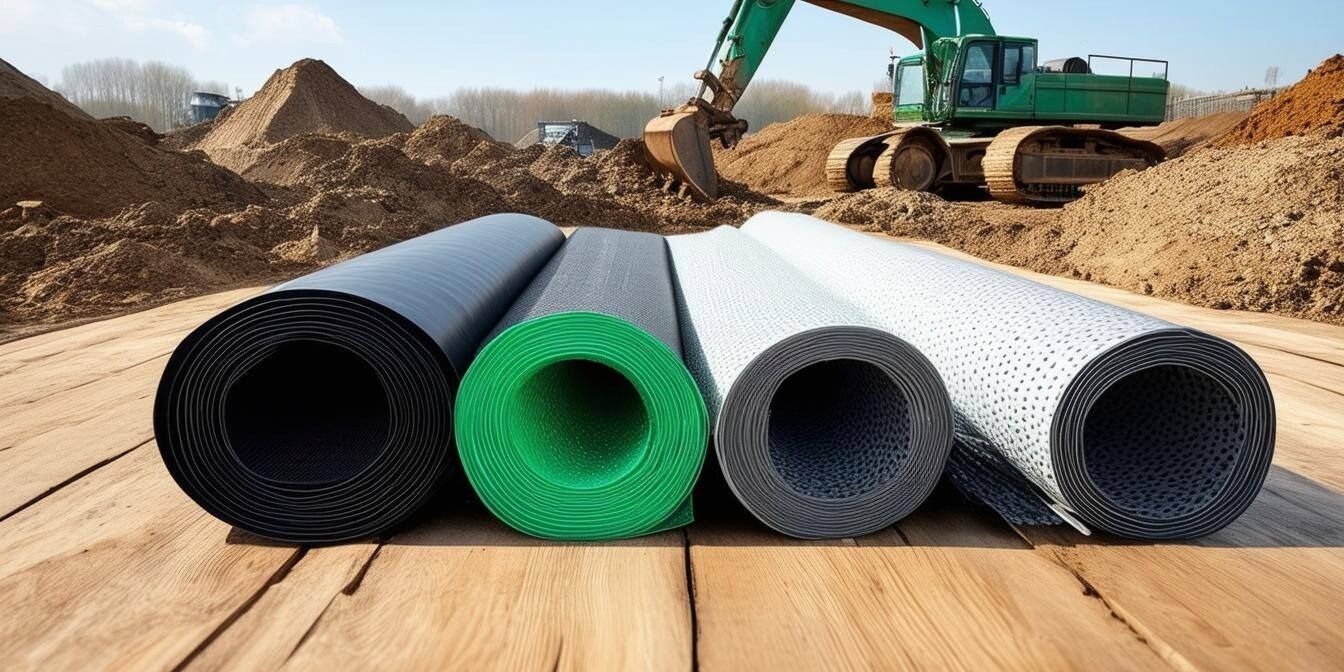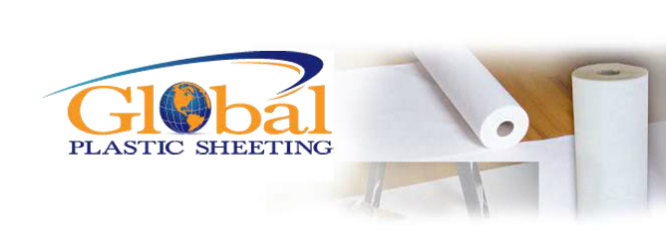Understanding Geomembranes: Types, Uses, and Why HDPE is a Top Choice

Geomembranes play a crucial role in environmental protection, industrial applications, and infrastructure projects. These synthetic membranes provide fluid containment, chemical resistance, and durability for a wide range of applications.
When selecting the right geomembrane, it's essential to understand the different types available and their primary uses—especially in high-risk containment projects like landfills and wastewater treatment plants.
Types of Geomembranes: A Breakdown of Materials and Benefits
Geomembranes are manufactured from various synthetic polymers, each offering distinct advantages. The most common types include:
1. High-Density Polyethylene (HDPE) Geomembranes
✔ Durable & UV Resistant: HDPE is one of the most widely used geomembranes due to its high strength, chemical resistance, and UV stability.
✔ Chemical Resistance: HDPE is impermeable to most chemicals, making it ideal for hazardous waste containment.
✔ Best for: Landfills, mining, wastewater treatment plants, and agricultural ponds.
Drawback: HDPE is less flexible than some alternatives, which may make installation on uneven terrain more challenging.
2. Linear Low-Density Polyethylene (LLDPE) Geomembranes
✔ More Flexible Than HDPE: LLDPE offers greater flexibility while maintaining excellent chemical resistance.
✔ Best for: Projects requiring tight conformation to uneven surfaces, such as lagoons and floating covers.
Drawback: LLDPE has a lower tensile strength than HDPE, which may affect long-term durability in heavy-duty applications.
3. Polyvinyl Chloride (PVC) Geomembranes
✔ Highly Flexible & Easy to Install: PVC geomembranes conform easily to irregular surfaces, making them easier to install than HDPE.
✔ Best for: Temporary containment solutions, canals, decorative ponds, and industrial liners.
Drawback: PVC breaks down over time when exposed to UV rays, so it requires protective covering if used outdoors.
4. Ethylene Propylene Diene Monomer (EPDM) Geomembranes
✔ Extremely Flexible & Durable: EPDM is a rubber-based geomembrane known for its elasticity and long lifespan.
✔ Best for: Aquatic applications, artificial lakes, reservoirs, and projects needing a highly flexible liner.
Drawback: EPDM is more expensive than HDPE or PVC and is less resistant to certain chemicals.
5. Other Types of Geomembranes
✔ Reinforced Polyethylene (RPE): Offers superior durability and is often used for industrial applications.
✔ Polypropylene (PP): Used in specialized containment applications requiring chemical resistance.
✔ Geosynthetic Clay Liners (GCLs): A natural alternative that uses bentonite clay for containment.
Each geomembrane type has specific benefits depending on the project’s environmental conditions, chemical exposure, and structural needs.
Primary Applications of HDPE Geomembranes
HDPE is the most commonly used geomembrane material due to its exceptional chemical resistance, impermeability, and long lifespan. Here’s where HDPE geomembranes provide critical containment and protection:
1. Landfills & Waste Containment
✔ Prevents Leachate Contamination: HDPE liners block hazardous liquids from seeping into the soil and groundwater.
✔ Meets Environmental Regulations: Used in municipal solid waste landfills to comply with EPA containment standards.
✔ Durable & Long-Lasting: HDPE liners resist chemical degradation, making them ideal for long-term landfill operations.
2. Wastewater Treatment Plants
✔ Used in Sewage & Sludge Ponds: HDPE geomembranes line wastewater treatment lagoons to prevent contamination.
✔ Corrosion & Chemical Resistant: Protects against industrial wastewater, sewage chemicals, and biological degradation.
✔ Seals Contaminants In: Ensures cleaner water discharge by keeping wastewater contained and processed safely.
3. Mining Operations
✔ Heap Leach Pads: HDPE geomembranes are used in gold, copper, and uranium mining to contain cyanide and acid solutions.
✔ Tailings Ponds: Prevents toxic mining waste from contaminating the environment.
✔ Resists Harsh Conditions: Withstands abrasion, UV exposure, and chemical exposure common in mining.
4. Water Reservoirs & Agricultural Ponds
✔ Water Conservation: Used to line irrigation canals, reservoirs, and ponds to prevent seepage losses.
✔ Safe for Potable Water: HDPE is certified for drinking water containment, making it ideal for municipal reservoirs.
✔ Resists UV Damage: HDPE geomembranes can be left exposed for years without breaking down.
5. Oil & Gas Industry
✔ Secondary Containment Systems: Used under fuel storage tanks to prevent leaks from contaminating groundwater.
✔ Fracking Pits: HDPE geomembranes contain hydraulic fracturing fluids to ensure environmental safety.
✔ Pipeline Protection: Acts as a corrosion barrier for underground pipelines.
6. Aquaculture & Fish Farming
✔ Non-Toxic & Safe for Marine Life: HDPE is used in fish ponds and shrimp farms to prevent pollution.
✔ Easy to Clean & Maintain: Reduces water loss and bacterial buildup, improving farming efficiency.
7. Infrastructure & Construction
✔ Tunnel Waterproofing: Used in subway systems, highway tunnels, and underground storage facilities.
✔ Roofing & Green Roofs: Provides a waterproof barrier for green roofing projects.
✔ Flood Control: HDPE liners prevent erosion and soil loss in flood-prone areas.
Why HDPE is the Preferred Choice for Many Industries
HDPE geomembranes stand out due to their:
✔ Exceptional Chemical Resistance: Withstands exposure to acids, bases, and industrial chemicals.
✔ High UV & Weather Resistance: Can be exposed for decades without degrading.
✔ Toughness & Tear Resistance: Ideal for harsh environments like mining and landfills.
✔ Low Cost & Long-Term Value: Offers affordable containment solutions with a lifespan of 20+ years.
Final Thoughts: Choosing the Right Geomembrane for Your Project
When selecting a geomembrane liner, consider:
- Application Requirements: Does the project need chemical resistance, UV protection, or extreme flexibility?
- Budget & Longevity: HDPE offers long-term durability, while PVC and LLDPE may suit short-term applications.
- Installation Conditions: If working with uneven surfaces, a flexible liner like LLDPE or EPDM may be better than HDPE.
✔ For landfills, mining, and industrial containment, HDPE is the most reliable choice.
✔ For water storage, aquaculture, and temporary liners, LLDPE, PVC, or EPDM may work better.
Get the Best Geomembrane for Your Project!
Looking for high-quality HDPE or specialized geomembrane liners? We offer:
✅ HDPE, LLDPE, PVC, and EPDM liners for all industries
✅ Custom sizing, bulk pricing & expert recommendations
✅ Fast shipping & professional installation support
📞 Contact us today to find the best geomembrane solution for your project! 🚀🏗️


